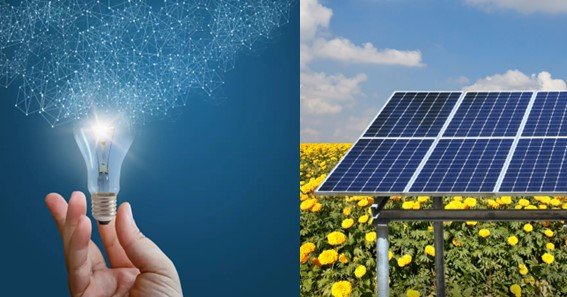Solar panels are an increasingly popular source of clean energy, and they work by converting sunlight into electricity through a process known as the photovoltaic (PV) effect. This technology allows us to harness the sun’s energy to power homes, businesses, and even entire communities.
The Science Behind Solar Panels and Electricity
1. Photovoltaic Effect: The Core of Solar Power
The process begins when sunlight hits the photovoltaic cells in a solar panel. These cells are made of semiconductor materials, typically silicon. When photons (particles of sunlight) strike the silicon cells, they transfer their energy to electrons, knocking them loose from their atoms. This creates a flow of electric current within the cell.
2. Creation of Direct Current (DC)
As the electrons are freed and begin to move, they generate an electric current, known as direct current (DC). However, most homes and appliances run on alternating current (AC), so the DC electricity produced by the solar panels needs to be converted.
3. Conversion to Alternating Current (AC)
The DC electricity flows through the solar panel’s wiring and into an inverter, a device that converts DC into AC. This AC electricity can then be used to power household appliances, lighting, and other electrical devices.
4. Distribution and Use
Once converted to AC, the electricity is distributed throughout the home or business via the electrical panel. Any excess electricity can be stored in batteries for later use or sent back to the grid, where it can provide power to other users.

FAQ
- How do solar panels generate electricity?
Solar panels generate electricity through the photovoltaic effect, where sunlight excites electrons in the panel’s silicon cells, creating a flow of electric current. - What is the photovoltaic effect?
The photovoltaic effect is the process by which solar cells convert sunlight into electricity by freeing electrons from atoms in a semiconductor material. - Why do solar panels produce DC electricity?
Solar panels produce direct current (DC) because the movement of electrons in a single direction creates this type of current. Inverters then convert DC into the alternating current (AC) used in most homes. - Can solar panels work on cloudy days?
Yes, solar panels can generate electricity even on cloudy days, though their efficiency is reduced due to lower levels of sunlight. - What happens to excess electricity produced by solar panels?
Excess electricity can be stored in batteries for later use or sent back to the grid, often resulting in credits on your electricity bill.










